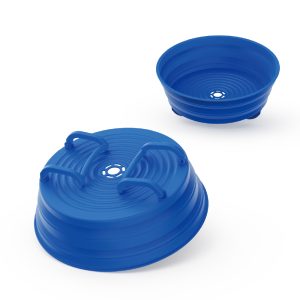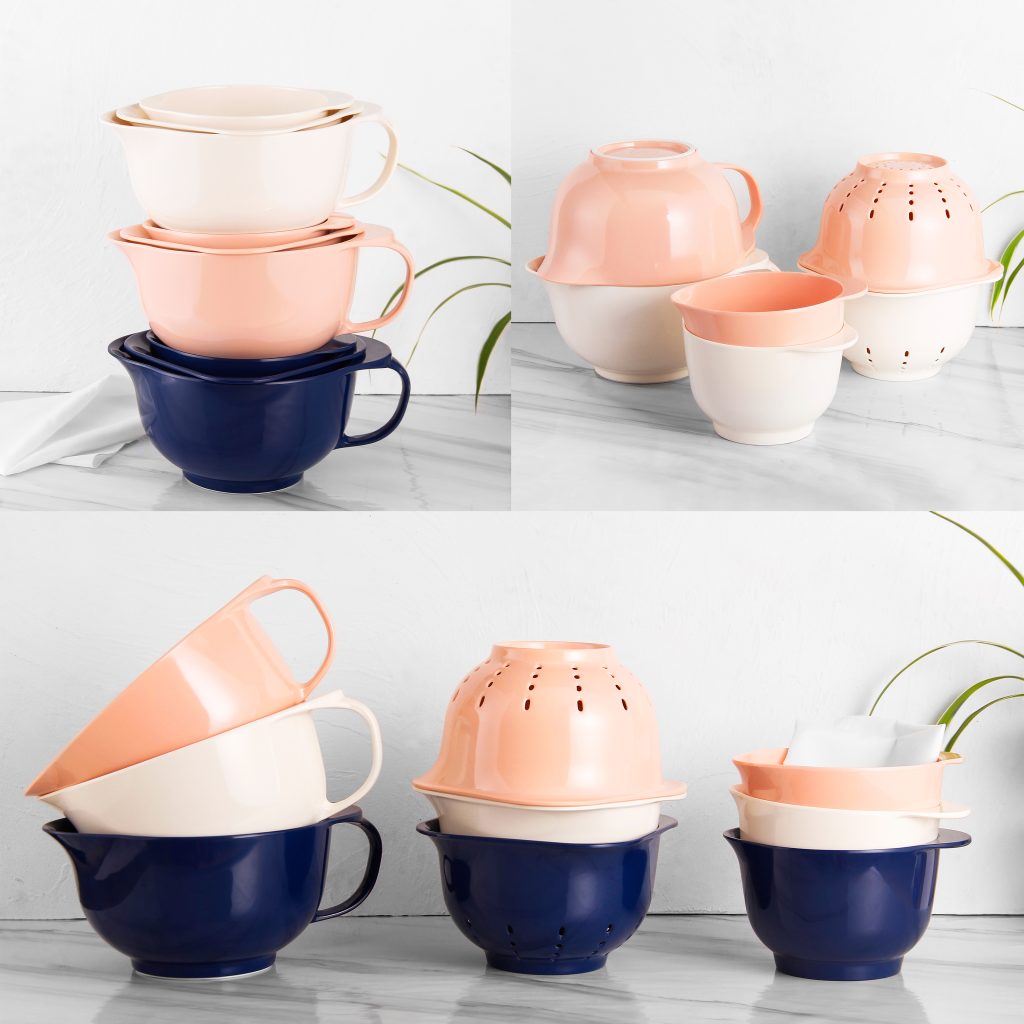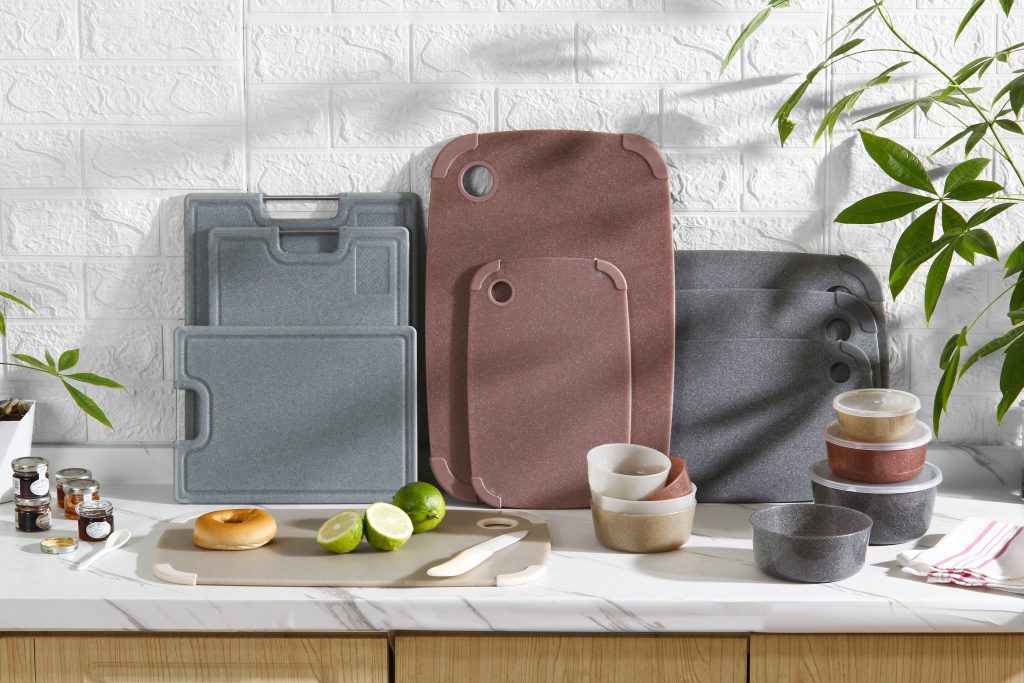Navigating the Shifting Tides of Plastics: A Guide for Retail and Brand Buyers in the Home and Kitchen Industry
The global landscape of plastic materials is undergoing a significant transformation, driven by increasing environmental awareness, evolving consumer demands, and stricter regulatory frameworks. For B-end retail and brand buyers in the home and kitchen industry, understanding these shifts is not just a matter of corporate social responsibility but a crucial element of future-proofing product lines and maintaining a competitive edge. This article delves into the classification of plastic materials, their environmental recycling, global policy trends, key considerations for purchasing, and the future trajectory of plastic products, aiming to inform and inspire strategic decision-making.
Understanding the Classification of Plastic Materials
Plastics are broadly classified into various types based on their chemical structure and properties, often identified by Resin Identification Codes (RIC) ranging from 1 to 7. These codes, typically found on the bottom of plastic products, are crucial for recycling and understanding the material’s characteristics. The most common types include:
- 1 (PET or PETE): Polyethylene Terephthalate, commonly used in beverage bottles and food containers due to its clarity and strength. While widely recycled, it’s generally intended for single use as repeated use can lead to bacterial buildup and potential leaching.
- 2 (HDPE): High-Density Polyethylene, known for its durability and chemical resistance. It’s used in milk jugs, detergent bottles, and some food storage containers. HDPE is considered relatively safe and is widely recycled.
- 3 (PVC): Polyvinyl Chloride, a versatile plastic used in pipes, window frames, and some flexible products. PVC contains chlorine and can release harmful chemicals, especially when heated. It is generally not recommended for food contact and has limited recyclability.
- 4 (LDPE): Low-Density Polyethylene, flexible and used in plastic bags and cling film. While considered relatively safe, its recycling rate is lower compared to PET and HDPE.
- 5 (PP): Polypropylene, rigid and heat-resistant, making it suitable for food containers, microwaveable ware, and some kitchen utensils. PP is considered safe for food contact and is increasingly being recycled.
- 6 (PS): Polystyrene, used in disposable cutlery, cups, and packaging foam (Styrofoam). It can leach styrene, a potential neurotoxin, especially when heated. Recycling of PS is challenging and often limited.
- 7 (Other): This category includes various plastics like polycarbonate (PC), often containing Bisphenol A (BPA), and bioplastics like PLA (Polylactic Acid). The safety and recyclability vary significantly within this group.





Environmental Recycling of Plastics in the Home and Kitchen Industry
The environmental impact of plastic waste is a growing concern. While plastics offer durability and functionality, their persistence in the environment necessitates robust recycling systems and a shift towards more sustainable alternatives. Currently, only a fraction of plastic waste is recycled globally. A 2022 study in the U.S. estimated that only 5% of plastic waste is recycled, with the majority ending up in landfills or being incinerated.
In the home and kitchen sector, common plastic items like food containers, bottles, and utensils contribute significantly to this waste stream. Enhancing the recyclability of these products requires a multi-pronged approach:
- Design for Recyclability: Products should be designed using mono-materials or easily separable components made from recyclable plastics like PET and HDPE. Avoid complex multi-layered structures or the use of difficult-to-recycle plastics like PVC and PS.
- Increased Use of Recycled Content: Incorporating post-consumer recycled (PCR) plastics in new products reduces the demand for virgin resources and helps close the loop. For instance, PET bottles can be recycled into new bottles (rPET), and HDPE can be downcycled into items like park benches. However, concerns about potential contamination from electronic waste in recycled black plastics used in some household goods highlight the need for careful sourcing and quality control.
- Promoting Proper Sorting and Collection: Clear labeling and consumer education are crucial to improve the quality and quantity of recycled plastics. Standardized recycling systems across regions can also enhance efficiency.
- Exploring Alternative Recycling Technologies: Chemical recycling, which breaks down plastics into their molecular components, and enzymatic processes offer promising avenues for recycling currently difficult-to-recycle plastics, potentially leading to higher quality recycled materials.
- Compostable Bioplastics: PLA and other bioplastics derived from renewable resources offer a potential alternative for certain single-use kitchenware. However, they often require industrial composting facilities for proper degradation and can contaminate conventional plastic recycling streams if mixed.
Global Policies on Plastic Products
Governments worldwide are implementing various policies to tackle plastic pollution, which will significantly impact the retail and consumer goods sectors. These policies include:
- Bans on Single-Use Plastics: Many countries and regions have banned or restricted single-use plastic items like straws, cutlery, bags, and certain food containers. The EU’s Single-Use Plastics Directive, for example, implemented bans on specific items in July 2021 and sets targets for recycled content in PET bottles (25% by 2025 and 30% by 2030) and collection rates for plastic bottles (77% by 2025 and 90% by 2029).
- Extended Producer Responsibility (EPR) Schemes: These policies hold manufacturers responsible for the end-of-life management of their products and packaging, often requiring them to finance collection, sorting, and recycling. EPR schemes are becoming increasingly common globally.
- Recycled Content Mandates: As seen in the EU directive, some regions are mandating minimum percentages of recycled content in specific plastic products to drive demand for recycled materials.
- Plastic Taxes: Some countries have implemented taxes on single-use plastics or virgin plastic production to incentivize the use of recycled materials and alternatives.
- Global Plastics Treaty: Negotiations are underway for a global treaty on plastic pollution, which could introduce binding international regulations on plastic production, design, and waste management, potentially reshaping the industry landscape significantly. The second part of the fifth session of the Intergovernmental Negotiating Committee (INC-5.2) in August 2025 is a key milestone in these discussions.
These policies necessitate that retail and brand buyers stay informed about evolving regulations in their target markets and proactively adapt their sourcing and product development strategies.






Key Considerations When Purchasing Different Types of Plastic Products
For retail buyer, making informed decisions about plastic products requires considering safety, durability, functionality, environmental impact, and regulatory compliance. Here are some key points when purchasing different types of plastic products for the home and kitchen industry:
- Food Contact Safety: Prioritize plastics that are deemed safe for food contact, such as HDPE (2), LDPE (4), and PP (5). Avoid PVC (3) and PS (6) for food and beverage applications due to potential leaching of harmful chemicals, especially when heated. For products made from “Other” plastics (7), inquire specifically about the materials used and their safety certifications (e.g., BPA-free for polycarbonate).
- Durability and Intended Use: Select plastics that are fit for their intended purpose and offer adequate durability to ensure a reasonable product lifespan. For reusable items, opt for more robust materials like HDPE and PP. Single-use items, if necessary, should ideally be made from easily recyclable materials like PET or increasingly, compostable bioplastics with clear labeling for proper disposal.
- Recyclability and Recycled Content: Inquire about the recyclability of the plastic material in the target market’s infrastructure. Prioritize products made with a high percentage of PCR content to support the circular economy. Verify the source and quality of recycled plastics, especially for food contact applications.
- Labeling and Transparency: Ensure that products are clearly labeled with the Resin Identification Code to aid consumer recycling. Request transparency from suppliers regarding the types of additives used in the plastic and their potential environmental and health impacts.
- Compliance with Regulations: Stay updated on the specific regulations regarding plastic products in your target markets, including bans, recycled content mandates, and labeling requirements. Ensure that your purchased products comply with these regulations to avoid legal and reputational risks.
- Consider Alternatives: Explore and evaluate non-plastic alternatives like glass, stainless steel, bamboo, and ceramics, especially for reusable tableware and kitchenware. These materials often offer superior durability and recyclability and can appeal to environmentally conscious consumers.


The Future Direction of Plastic Products
The future of plastic products in the home and kitchen industry is likely to be shaped by several key trends:
- Increased Focus on Circularity: The industry will move towards more circular models, emphasizing design for recyclability, increased use of PCR content, and the development of effective recycling technologies. Closed-loop systems, where post-consumer plastic is converted back into high-quality raw materials, will become more prevalent.
- Growth of Bioplastics and Biodegradable Materials: Innovation in bio-based and biodegradable plastics will continue, offering alternatives to traditional fossil-fuel-based plastics for specific applications, particularly in packaging and single-use items. However, ensuring proper end-of-life management (e.g., industrial composting) will be crucial.
- Advancements in Recycling Technologies: Chemical and enzymatic recycling methods will mature and scale up, enabling the recycling of a wider range of plastic waste and producing higher-quality recycled materials suitable for more demanding applications, including food contact.
- Smart and Sustainable Additives: Development of additives that enhance the durability, functionality, and recyclability of plastics while minimizing environmental and health impacts will be a key focus. This includes biodegradable additives and antimicrobial solutions.
- Enhanced Transparency and Traceability: Consumers and regulators will demand greater transparency regarding the composition and environmental footprint of plastic products. Technologies for tracking and tracing plastics throughout the supply chain will become more important.
- Reduced Overall Plastic Consumption: Driven by environmental concerns and regulations, there will be a push towards reducing the overall consumption of virgin plastics through lightweighting, reusable product designs, and a shift towards alternative materials.
Call to Action: Partner with a Sustainable Future
As the landscape of plastic materials evolves, choosing the right partners is crucial for navigating these changes and meeting the growing demand for environmentally responsible products.
We are a Chinese factory deeply committed to environmentally friendly materials and offer B-end customers, including retailers and brands, a comprehensive suite of product solutions for the tableware and kitchenware industry. Our expertise spans the entire product lifecycle, from initial research and innovative design to cost-effective production and strategic marketing. We are dedicated to providing one-stop solutions that align with the principles of sustainability and circularity.
By partnering with us, you gain access to:
- Eco-conscious Material Selection: We specialize in utilizing recycled plastics, innovative bioplastics, and other sustainable alternatives without compromising on quality or functionality.
- Customized and Innovative Designs: Our experienced design team can create unique and market-leading products that meet your brand’s aesthetic and sustainability goals.
- Cost-Effective Production: Our efficient manufacturing processes ensure competitive pricing without sacrificing environmental responsibility.
- Comprehensive Support: From product development to marketing strategies, we provide end-to-end support to bring your sustainable product vision to life.
Embrace the future of sustainable consumer products. Contact us today to explore how our environmentally friendly tableware and kitchenware solutions can enhance your product offerings and resonate with environmentally conscious consumers. Let’s build a greener future together.

